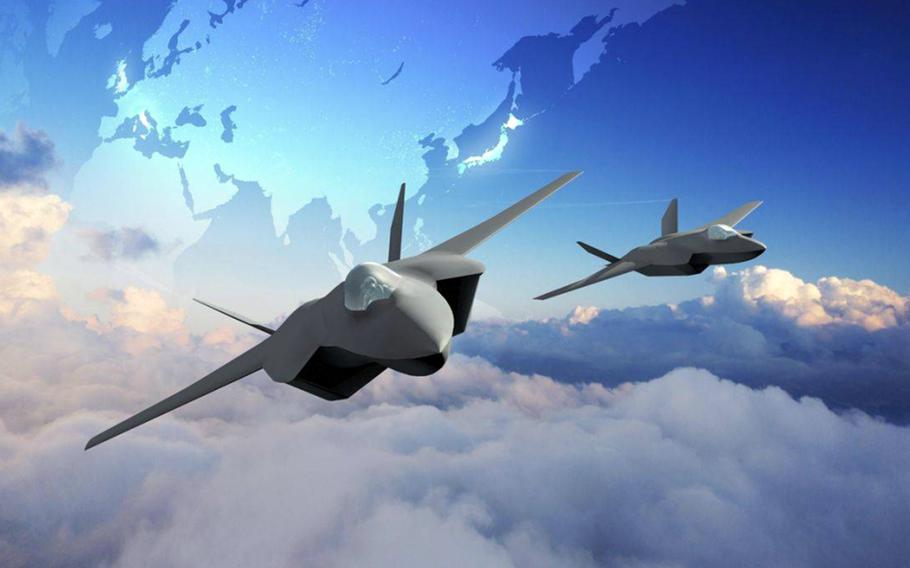
This rendering from Japan's Ministry of Defense shows a state-of-the-art fighter under development by Japan, the United Kingdom and Italy. (MOD)
TOKYO — Japanese robotic skills and American know-how in artificial intelligence merge conveniently in a project to bring unmanned vehicles to air combat, a U.S. academic said Tuesday.
The U.S. Department of Defense and Japan’s Ministry of Defense agreed last month to combine artificial intelligence and machine learning with advanced, unmanned aerial vehicles.
“The AI developed in this joint research is expected to be applied to UAVs (unmanned aerial vehicles) operated alongside Japan’s next fighter aircraft,” both defense departments said in a joint news release Dec. 22.
Japan, the United Kingdom and Italy aim to build, by the mid-2030s, an aircraft that combines speed, stealth, advanced sensors and AI that can fire hypersonic missiles and be flown without a pilot if required, the BBC reported Dec. 9.
While both Japan and the United States have broad high-technology competence, Japan is particularly strong in robotic systems, especially for factory automation, according to Arizona State University engineering professor Braden Allenby.
“Importantly, Japanese capabilities do not just involve a few leading firms, but a deep ecosystem,” he said by email Tuesday. “The Americans are, of course, world leaders in AI.”
The cooperation is driven by geopolitical challenges such as Russian aggression and troublemaking, and the increasing militarism and technical competence of China, Allenby said.
While the AI-drone program has received attention, there could also be collaboration on AI systems for undersea and surface naval warfare, Allenby said.
Meanwhile, U.S. aerospace firm Boeing and the Australian air force are developing the MQ-28A Ghost Bat, an unmanned aircraft that will also support fighter jets.
The Ghost Bat is designed to fly independently or as part of a team providing intelligence and reconnaissance support and “fighter-like performance,” according to Boeing’s website.